1981
The term "cultural landscape" is first codified by the NPS.
“Cultural landscape” is first defined as a cultural resource type in Cultural Resource Management Guideline, NPS 28, Release No. 2.
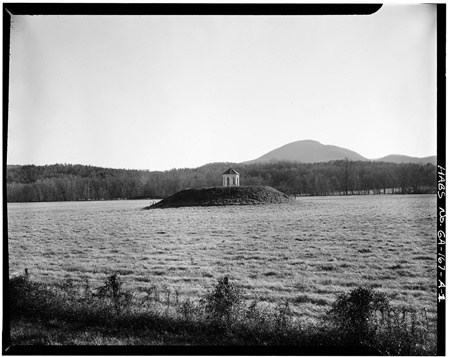
Photo from Historic American Buildings Survey, HABS GA-167-A
1982
First preservation plan for a rural historic district published.
Allen Stovall completes The Sautee and Nacoochee Valley, A Preservation Study, a comprehensive plan for the future development of two valleys in Northern Georgia to preserve their natural and cultural qualities.
1984
Guidance published for nominating rural districts to the National Register.
Cultural Landscapes: Rural Historic Districts in the National Park System is completed by Robert Melnick, Daniel Sponn and Emma Jane Saxe.
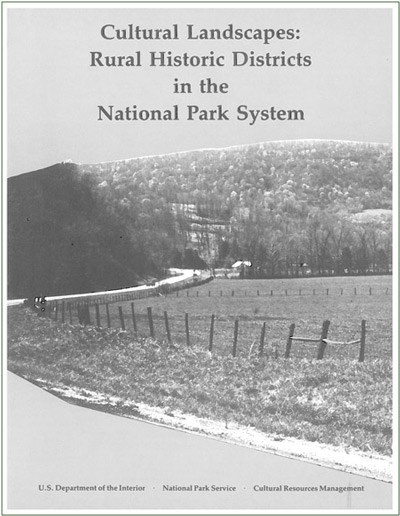
NPS
1984
National Heritage Areas Program established.
The National Heritage Area program is established by Congress to designate places where, "nature, culture, and historic resources combine to form a cohesive, nationally important landscape."
1985
The term "cultural landscape report" codified by the NPS.
The "cultural landscape report" (CLR) is identified in NPS 28, Release No. 3, as the official NPS planning document for cultural landscape treatment plans.
1986
First CLR treatment plan implemented by NPS.
The Tao House courtyard at the Eugene O'Neill Historic Site is rehabilitated to improve accessibility as part of the first CLR treatment plan to be carried out.

NPS Photo, 2016
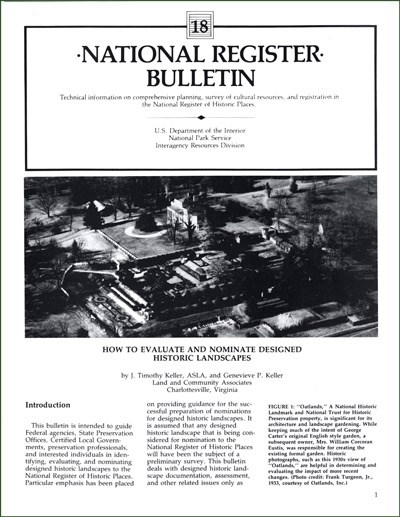
NPS
1987
Guidance published for nominating designed landscapes to the National Register.
1988
NPS adopts management policy for cultural landscapes.
The NPS Management Policies address cultural landscapes and include guidance for recognizing their historic, archeological, ethnographic and design values.
1992
NPS begins effort to inventory cultural landscapes in the national park system.
The NPS Cultural Landscape Inventory initiative begins with the design and testing of an inventory method for all cultural landscapes.
1992
The term "cultural landscape" codified internationally.
Cultural Landscapes are recognized by the United Nations Educational, Scientific and Cultural Organization (UNESCO), an agency of the United Nations, as a type of World Heritage Site.
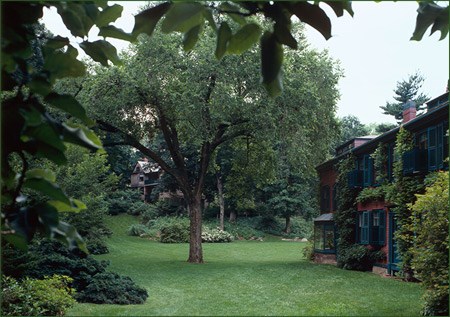
NPS Photo
1992
The Olmsted Center for Landscape Preservation established.
The Olmsted Center for Landscape Preservation is created within the Frederick Law Olmsted National Historic Site in Brookline, Massachusetts, to guide cultural landscape preservation activities in the northeast United States, within national parks, and with preservation partners.
1995
Public guidance on cultural landscape preservation released by the NPS.
Preservation Brief 36: Protecting Cultural Landscapes: Planning, Treatment and Management of Historic Landscapes is published, providing step-by-step guidance for preserving designed and vernacular landscapes to a public audience.
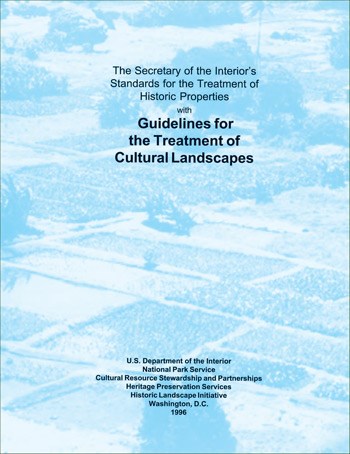
1996
Professional guidance for the treatment of cultural landscapes published.
Secretary of the Interior's Standard for the Treatment of Historic Properties with Guidelines for the Treatment of Cultural Landscapes provides the first professional standards in the U.S.
1997
The content of NPS cultural landscape inventories standardized.
A Cultural Landscape Inventory database is released throughout the NPS, providing standardization to the documentation of the history, existing conditions, and evaluation of integrity of cultural landscapes.
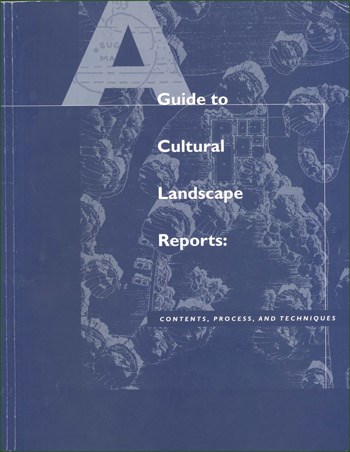
1998
The content of NPS cultural landscape reports standardized.
A Guide to Cultural Landscape Reports: Contents, Process and Techniques is published, standardizing the approach to the preparation of a Cultural Landscape Report as the cultural landscape treatment plan.
1998
The Cultural Landscape Foundation (TCLF) is established.
TCLF is a non-profit organization with a mission to "educate and engage the public to make our shared landscape heritage more visible, identify its value, and empower its stewards."
Last updated: July 9, 2021
